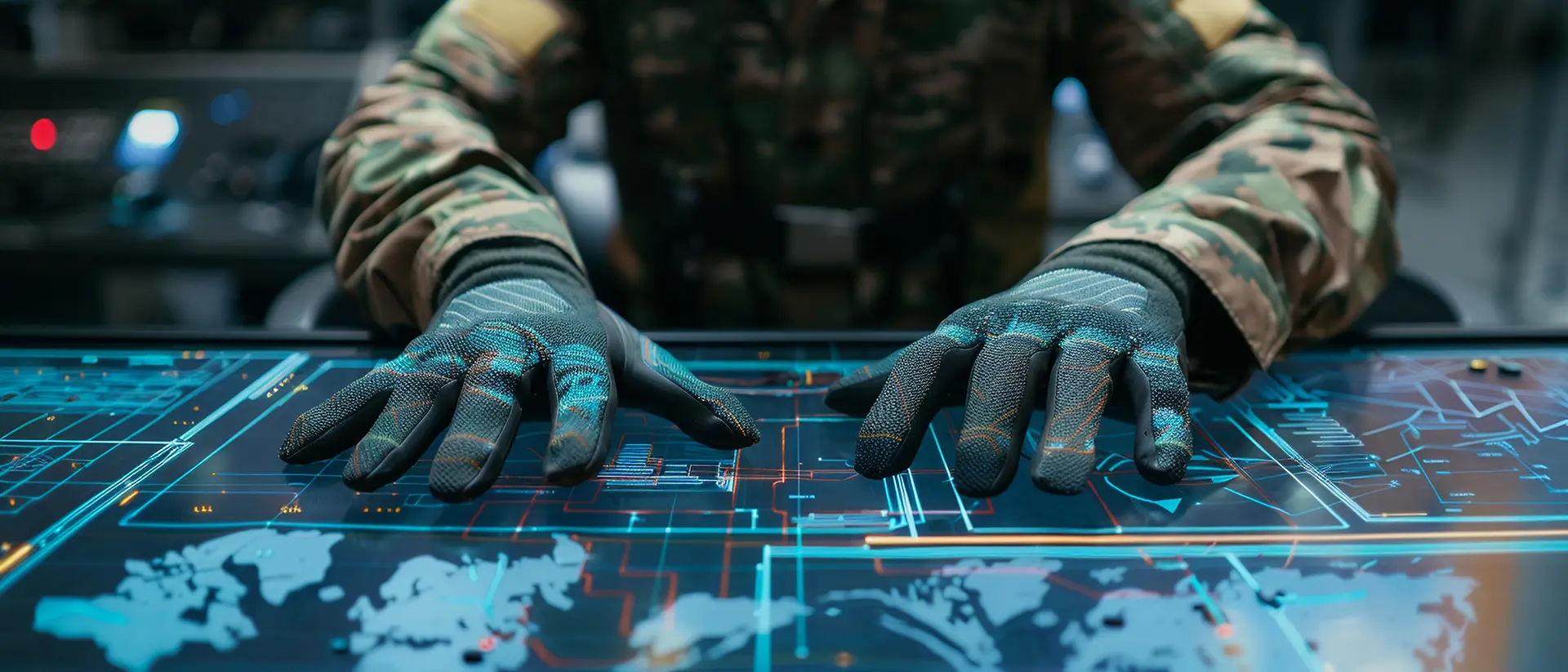Table of contents
- What is cyber war?
- The cyber cold war: a new era of conflicts
- Types of attacks in cyber war
- Targeted critical infrastructures
- National security and cyber security
- The United States and cyber warfare
Cyber war, better known as cyber warfare, represents one of the most significant threats of the 21st century.
Today, it is not difficult to imagine wars being fought using digital weapons.
Cyber attacks have become real tools of conflict between nations.
But what exactly is cyber war? And how does the concept of cyber cold war fit into this context?
What is cyber war?
Cyber war refers to the use of digital technologies to carry out attacks against the critical infrastructure of another state with the aim of causing damage, disabling essential services, and compromising national security.
These attacks can take various forms, from simple computer viruses to complex DDoS (Distributed Denial of Service) attacks that aim to overload and disable targeted IT systems.
The cyber cold war: a new era of conflicts
The term cyber cold war is inspired by the Cold War of the 20th century, characterized by political, military, and economic tensions between the United States and the Soviet Union without direct armed conflict.
The cyber cold war, on the other hand, represents a continuous digital conflict in which nations use cyberspace as a battleground to carry out cyber attacks, gather information, and influence global events without direct military confrontation.
Types of attacks in cyber war
Cyber war includes a wide range of cyber attacks, each with specific techniques and objectives.
Below is a detailed description of some of the main types of attacks, enriched with practical examples.
- DDoS attacks (Distributed Denial of Service)
DDoS attacks aim to overload the target’s IT systems by flooding them with fake traffic, making them inaccessible to legitimate users. This type of attack can paralyze crucial online services, causing significant disruptions.
Example:
In 2016, the Internet service provider Dyn suffered a massive DDoS attack that made many major websites, including Twitter, Reddit, and Netflix, inaccessible. The attack was carried out using a botnet composed of compromised IoT devices.
- Malware
Malware is malicious software designed to infiltrate and damage IT systems. There are various types of malware, including viruses, trojans, and ransomware. Malware can steal sensitive data, compromise system functionality, or demand a ransom to restore access to data.
Example:
In 2017, the WannaCry ransomware spread globally, infecting over 200,000 computers in 150 countries. WannaCry encrypted users’ data and demanded a ransom in bitcoin to decrypt them. The attack affected hospitals, companies, and government agencies, causing enormous damage.
- Phishing
Phishing is an online deception technique used to obtain sensitive information such as login credentials and banking data by pretending to be a trustworthy entity. Phishing attacks are often carried out through fake emails or websites.
Example:
In 2016, a phishing attack against the Democratic National Committee of the United States led to the compromise of sensitive emails, influencing the presidential elections. Hackers sent fake emails that appeared to come from Google, convincing recipients to reveal their passwords.
- Supply chain attacks
Supply chain attacks compromise IT systems through service providers by introducing vulnerabilities into software or hardware products. These attacks are particularly dangerous because they affect numerous organizations using the compromised products.
Example:
The 2020 SolarWinds attack compromised the Orion network management software used by thousands of companies and government agencies. Hackers inserted malicious code into a software update, allowing them to access SolarWinds customers’ systems and steal sensitive information.
- Advanced Persistent Threats (APT)
Advanced Persistent Threats (APT) are prolonged and targeted attacks often sponsored by nation-states. The attackers seek to remain hidden within the victim’s IT systems for long periods, collecting sensitive information or sabotaging operations.
Example:
The APT attack known as Stuxnet, discovered in 2010, was designed to sabotage Iran’s nuclear program. The Stuxnet worm targeted the centrifuges at the Natanz uranium enrichment facility, causing significant damage and delaying the program’s progress.

Targeted critical infrastructures
Critical infrastructures are the fundamental pillars on which the functioning of a modern society is based. They include key sectors such as:
- Energy
- Transportation
- Communications
- Drinking water
- Healthcare
In other words, the same infrastructure that would be hit by conventional missiles in the theatre of war.
Cyber attacks on these infrastructures can have devastating consequences, causing disruptions to essential services, economic damage, and endangering lives.
Below is an overview of the main critical infrastructures targeted by cyber attacks with some practical examples.
- Electric grids
Electric grids are among the most vulnerable critical infrastructures to cyber attacks. A disruption in the power supply can have a cascading effect, compromising other critical sectors such as transportation, communications, and healthcare.
Example:
In December 2015, a coordinated cyber attack targeted Ukraine’s electric grid, leaving about 225,000 people without electricity. Hackers used malware called BlackEnergy to compromise industrial control systems, disabling substations and disrupting the power supply.
- Water supply systems
Water supply systems are essential for providing access to drinking water and for the functioning of numerous industrial and agricultural activities. Attacks on these systems can contaminate water, disrupt supply, and cause serious public health problems.
Example:
In February 2021, a cyber attack targeted the Oldsmar water treatment plant in Florida. Hackers managed to alter the levels of sodium hydroxide (caustic soda) in the drinking water, increasing the concentration to dangerous levels. Fortunately, the attack was discovered and neutralized in time, preventing harmful consequences.
- Transportation systems
Transportation systems, including airports, railways, ports, and road networks, are crucial for the movement of people and goods. Cyber attacks on these systems can cause enormous disruptions, delays, and safety risks.
Example:
In June 2017, the NotPetya malware hit several global companies, including the maritime transport giant Maersk. The attack paralyzed Maersk’s operations, causing significant delays in goods handling and costing the company about $300 million.
- Communication systems
Communication networks, including telephone services, the internet, and broadcasting, are crucial for the daily activities of individuals, businesses, and governments. Attacks on these systems can isolate communities, disrupt emergency operations, and prevent the dissemination of information.
Example:
In December 2016, a cyber attack targeted the German telecommunications operator Deutsche Telekom, disconnecting about 900,000 routers and leaving customers without access to the internet, telephony, and TV. The attack was attributed to an attempt to recruit the routers into a botnet.
- Healthcare sector
Hospitals and healthcare facilities are particularly sensitive targets for cyber attacks. Compromising healthcare IT systems can delay medical treatments, endanger patients’ lives, and compromise the confidentiality of health data.
Example:
In May 2017, the WannaCry ransomware hit the UK’s National Health Service (NHS), encrypting hospital computers’ data and blocking access to systems. The attack caused the postponement of medical appointments and surgeries, putting patients’ health at risk.
National security and cyber security
National security is closely linked to the ability to protect IT systems from cyber threats.
States must invest in cyber security measures to defend against these attacks, which can come not only from other states but also from criminal groups and terrorists.
International cooperation and information sharing are crucial to effectively counter these threats.
The United States and cyber warfare
The United States is one of the main players in the field of cyber warfare.
The country has developed sophisticated defense and attack capabilities in cyberspace, recognizing the importance of protecting its critical infrastructures and responding to cyber attacks.
Additionally, the United States collaborates with international allies and partners to improve global cyber security.
Cyber war represents a new dimension of modern warfare, where nations confront each other not only on traditional battlefields but also in cyberspace.
The cyber cold war, with its dynamics of continuous and undeclared conflict, adds further complexity to this scenario.
Protecting critical infrastructures and improving cyber security measures are essential to ensure national security and prevent devastating damage.
FAQ
- What is cyber war?
Cyber war is the use of digital technologies to attack another state’s critical infrastructures, causing damage and compromising national security. - What are the main types of attacks in cyber war?
The main types of attacks include DDoS, malware, phishing, supply chain attacks, and Advanced Persistent Threats (APT). - What is the cyber cold war?
The cyber cold war is a continuous digital conflict between nations in cyberspace, similar to the Cold War but without direct military confrontation. - Which critical infrastructures are targeted by cyber attacks?
Critical infrastructures include electric grids, water supply systems, transportation, and communications. - How can states protect their critical infrastructures?
By investing in cyber security measures, cooperating internationally, and sharing information on cyber threats. - What is the role of the United States in cyber warfare?
The United States has developed sophisticated defense and attack capabilities in cyberspace and collaborates with international allies to improve cyber security. - What damage can cyber attacks cause?
Cyber attacks can cause blackouts, disruptions of essential services, and serious incidents, endangering people’s lives. - What are DDoS attacks?
DDoS attacks overload IT systems, making it impossible to access online services. - What are the consequences of the cyber cold war?
Consequences include political and military tensions, the collection of sensitive information, and the influencing of global events. - How can cyber attacks be prevented?
By implementing cyber security measures, constantly monitoring threats, and regularly updating IT systems.
